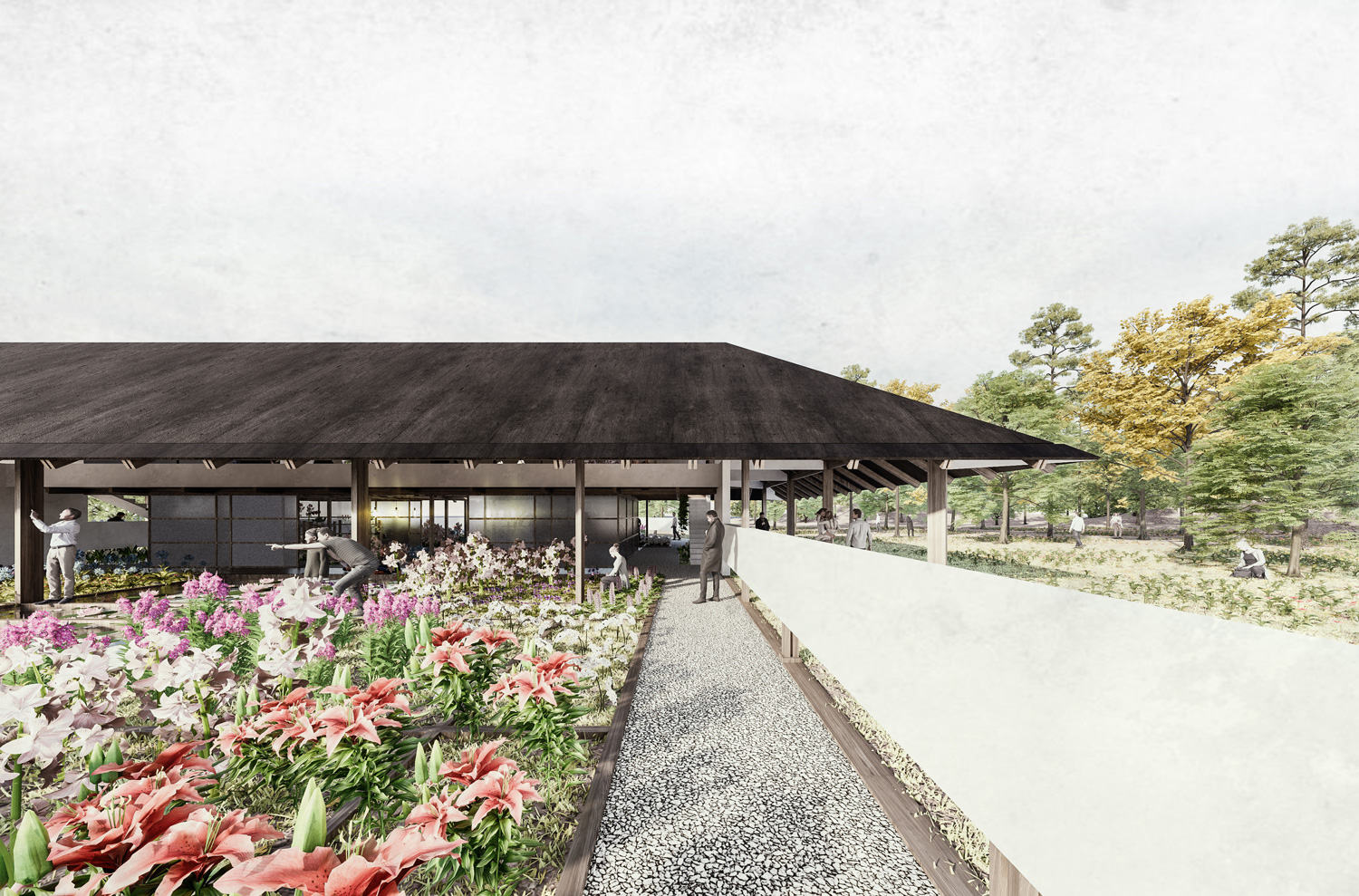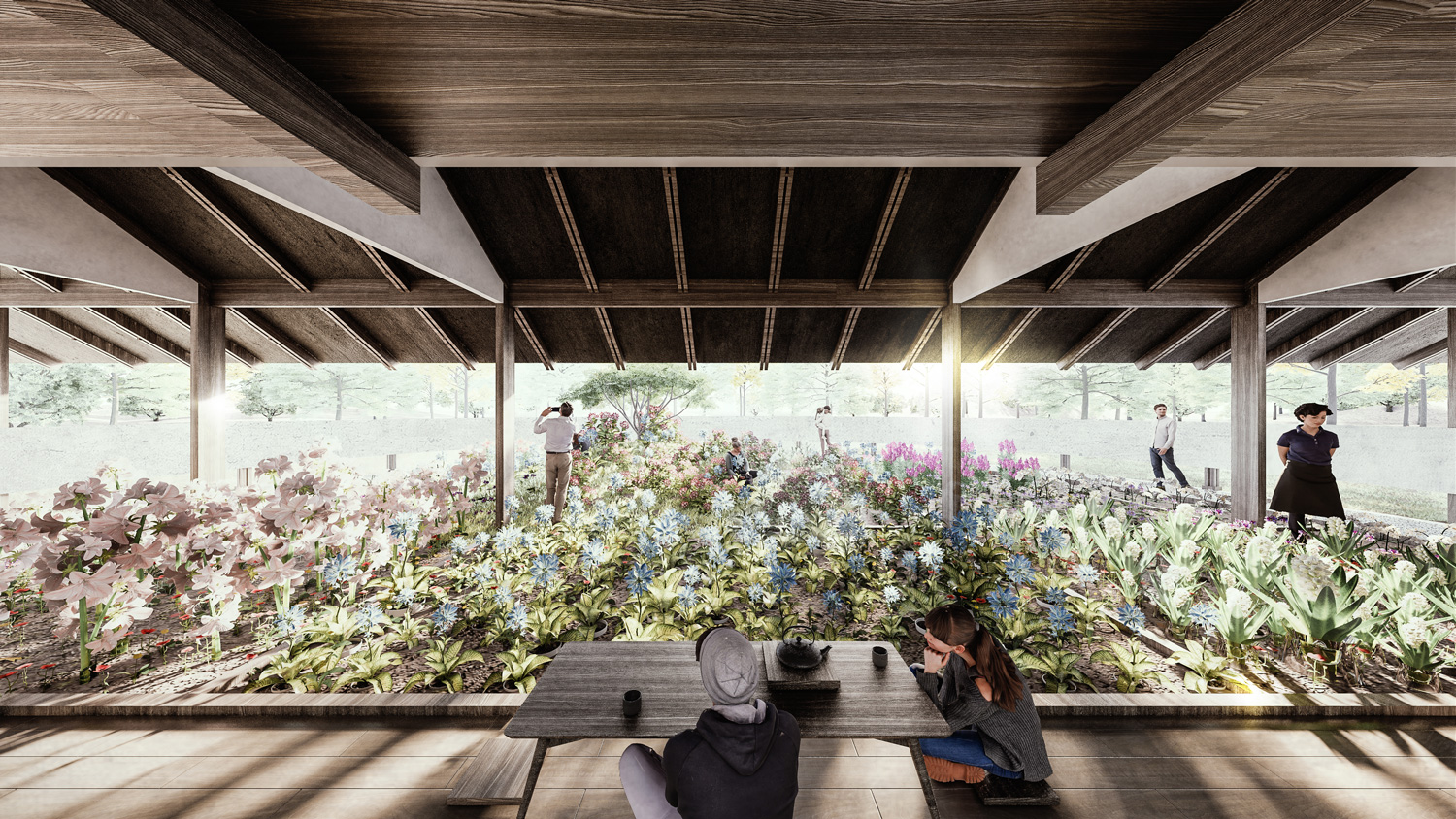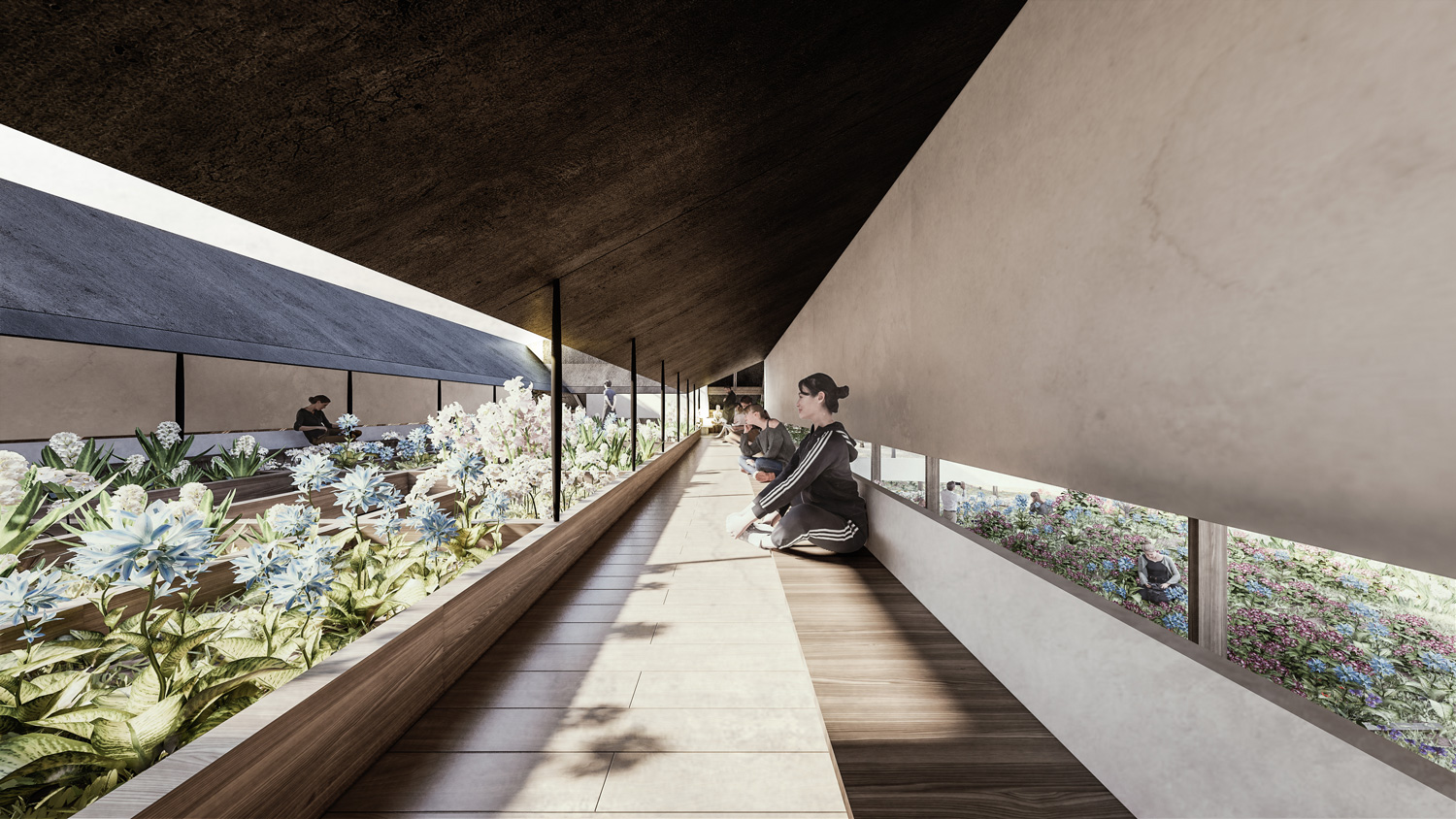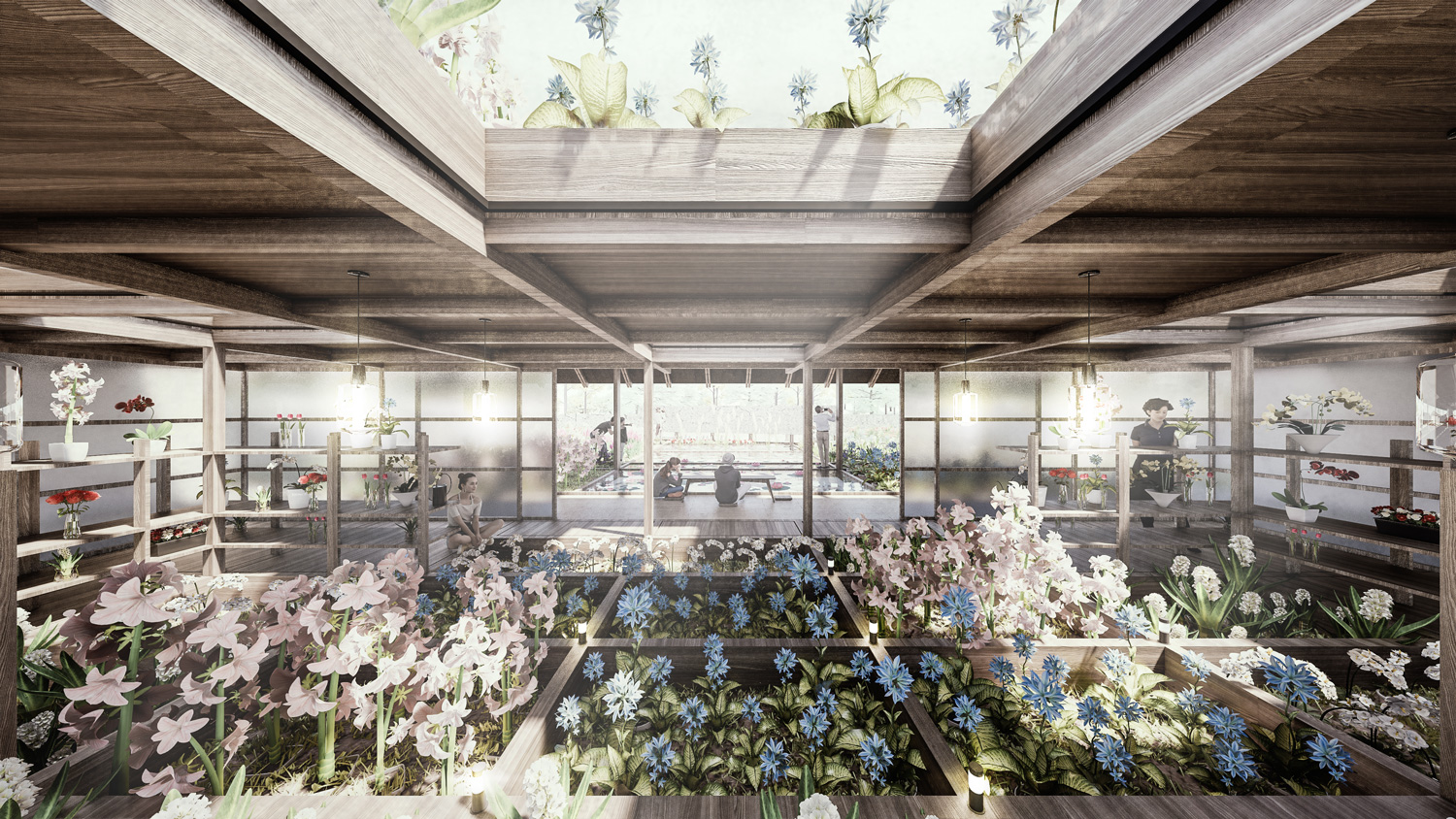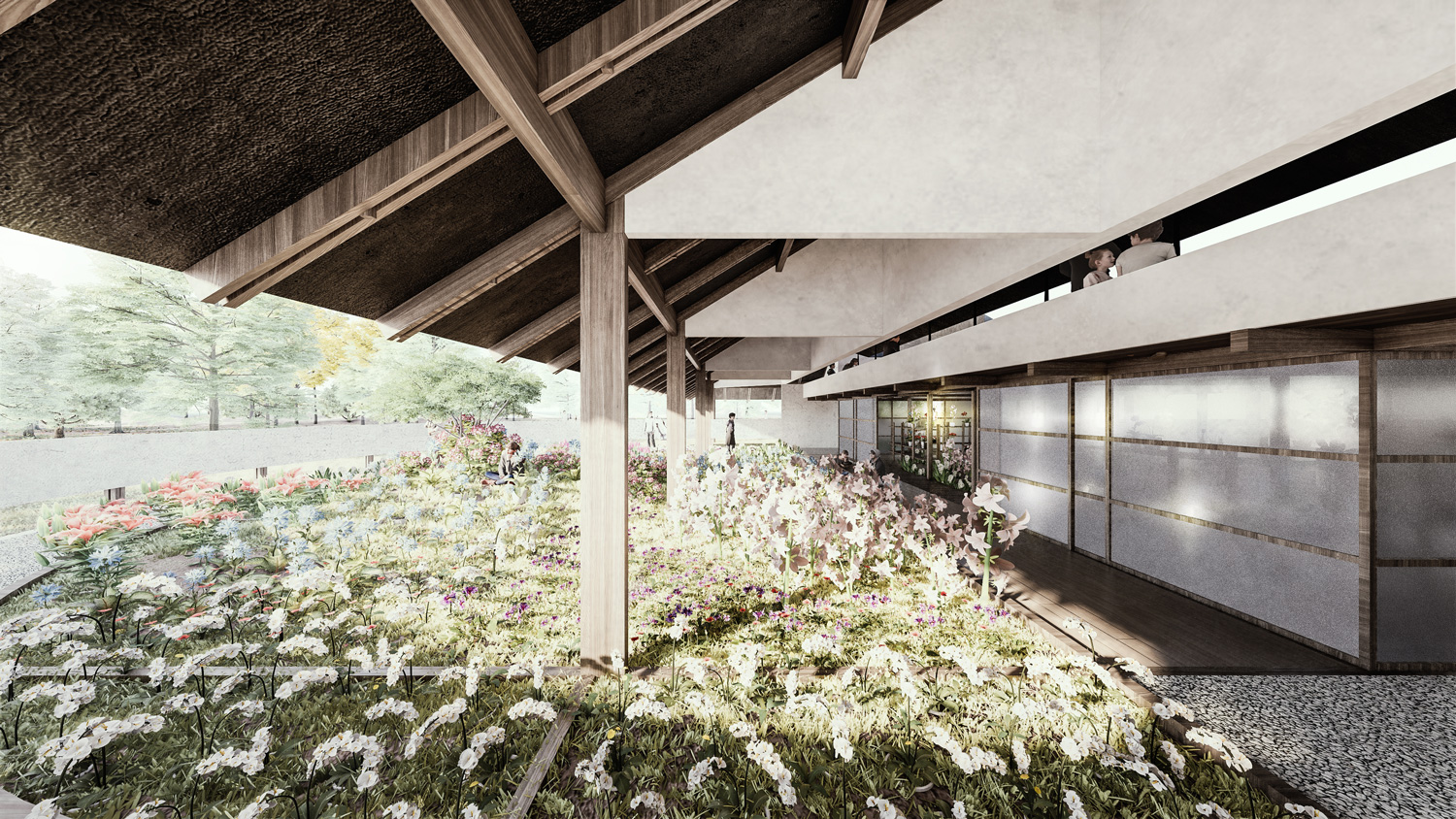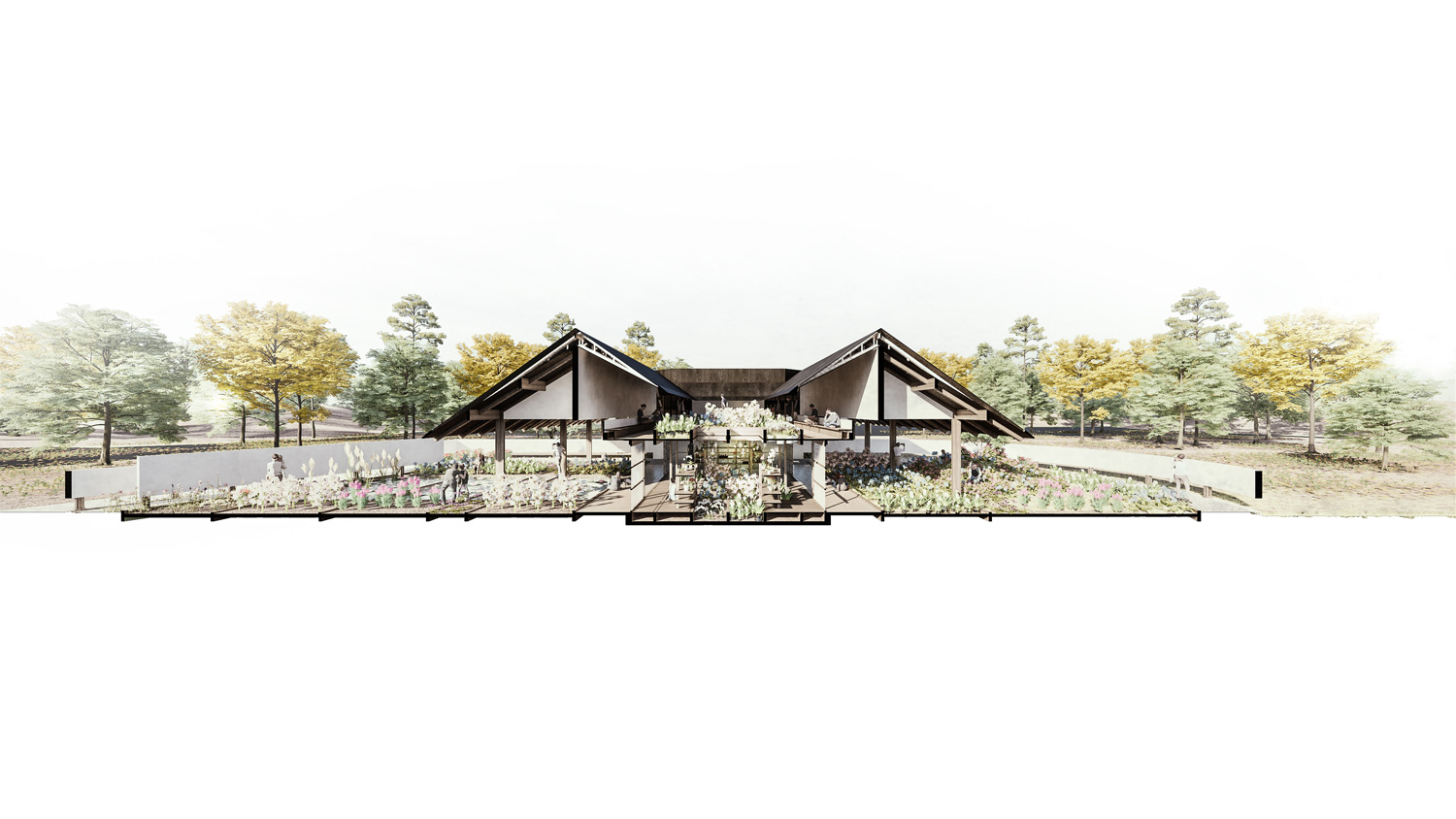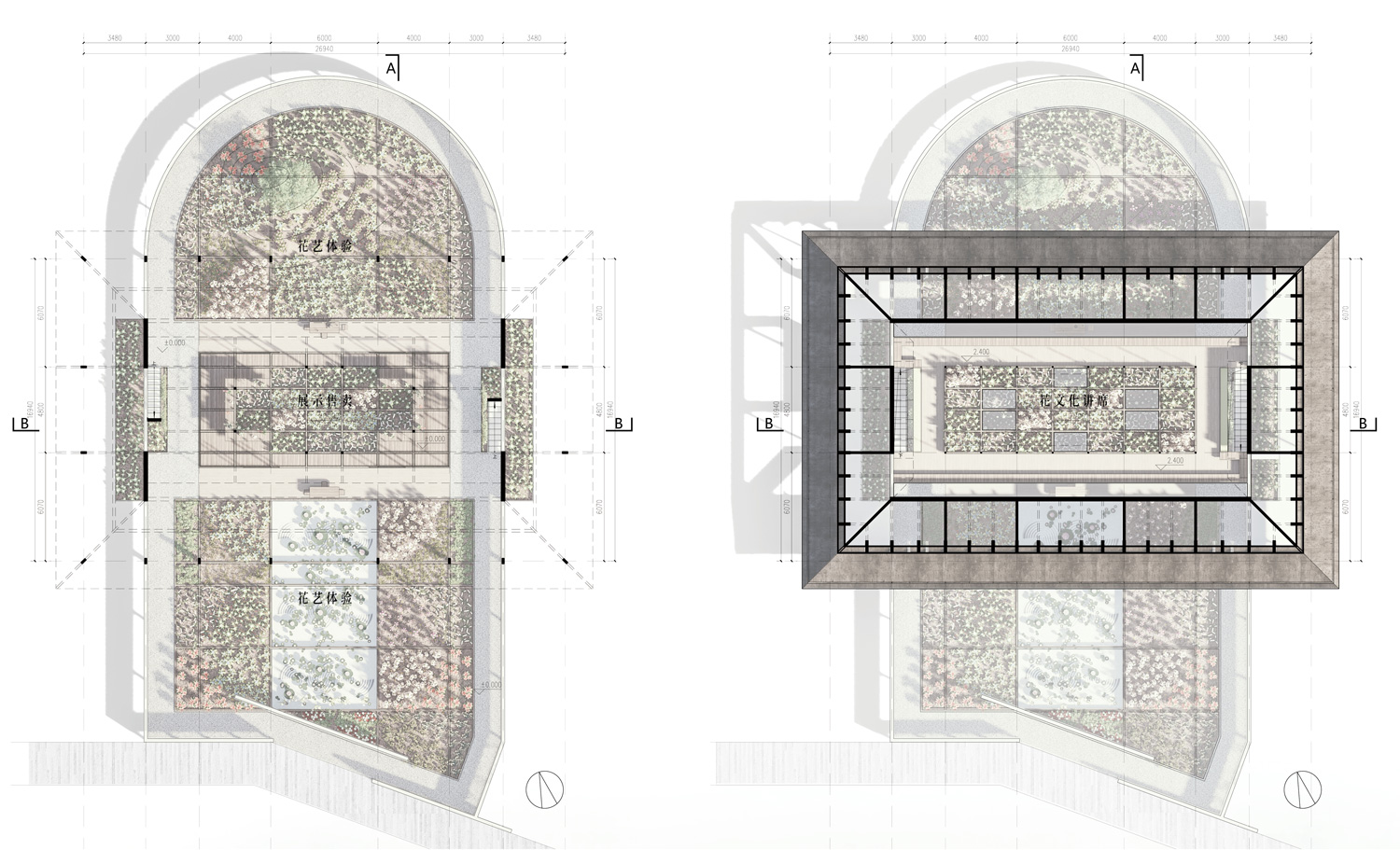2879-YCH-CN-2020
Client: Liyang Government
Status: Competition (2020)
Clasification: 1 prize
Location: Liyang, China
Coordinates: 31.19298, 119.503119
Climate: Humid subtropical, Temperate
Materials: Wood, Vegetal
Environment: Forest
Visualizer: Studio
Scale: 200 ㎡ Small
Types: Microarchitecture, Study
Sitting on the floor is a way of life that is intimate with the land, a way of living in symbiosis with nature in a low profile, reflecting a natural view of the unity of heaven and man in ancient China. The «rule of feasting» began in the Zhou Dynasty and was an important part of the Zhou rituals. The system of seated dwellings implicitly encapsulated the grand connotations of Chinese culture in relation to ritual, Zen and nature. The painting, which disappeared after the Tang and Song dynasties with the intermingling of the Hu and the Han, is a beautiful example of Chinese culture. This project draws on an in-depth study of the lifestyle of the seated dwelling, and through the extraction and translation of the traditional seated viewing space, awakens the cultural genes of the Chinese people that have been dormant for thousands of years.
The well courtyard and the transparent hall are the recognisable symbols of Jiangnan culture and the collective identity of the Chinese people, and their unique spatial characteristics and relationships are the infinite source of Chinese spatial design. This case is based on the spatial prototype of the Jiangnan well courtyard – hall, breaking the previous spatial structure of separating and opposing the space under the sloping roof and the space surrounding the courtyard, and introducing flowers and trees under the roof to create a traditional meaning of continuous indoor and outdoor permeability without boundaries, with a very limited area, to achieve a view that is both passable and partitioned, with layers overlapping, to see the big picture in a small way.
Firstly, the relationship between the elements of ‘house, well, wall and courtyard’ is deconstructed and the spatial structure is reorganised, dissolving the boundaries between man-made and nature, inside and outside the wall, well and courtyard and house, indoor and outdoor, open and private, creating a continuous flow of flower encounters; creating new spatial characteristics between the traditional life of sitting and watching and the classic prototype of the courtyard, This creates a new spatial identity between the traditional life of a seated house and the classic archetype of the courtyard, creating a multifaceted space that is both traditional and contemporary. Secondly, the sections and openings are carefully organised, the elevations are arranged, the lines of sight are drawn, the flowers meet the
skyline with a depressed expanse of vision, the horizontal extension of the flower garden is perceived, and the relationship between the body, the earth and the sky is reconstructed: sitting on the ground, the earth and the flowers and trees are connected below; looking up, the grass and the sky are inherited above. The viewer is immersed in nature in the small courtyard of the house and contemplates the place of the self.

